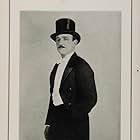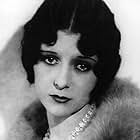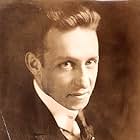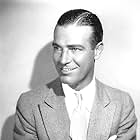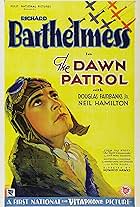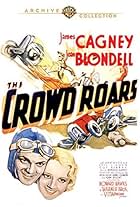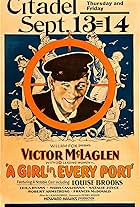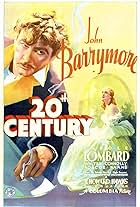Who killed the vicious millionaire Sigsbee Manderson? Not that pretty wife of his, surely? Philip Trent investigates.Who killed the vicious millionaire Sigsbee Manderson? Not that pretty wife of his, surely? Philip Trent investigates.Who killed the vicious millionaire Sigsbee Manderson? Not that pretty wife of his, surely? Philip Trent investigates.
Photos
Storyline
Did you know
- TriviaThis film was thought to be lost until over 40 years later when a copy was found among a cache of early Fox films. It was presented at a Howard Hawks retrospective in the mid-'70s and when Hawks found it was on the playlist he asked out loud, "You really aren't going to play this, are you?" Midway during the showing of the film Hawks walked up to the projection room and demanded the projectionist destroy the print of the film.
Featured review
In autumn of this year director Howard Hawks was honored with a comprehensive retrospective of his work at the Museum of the Moving Image in Queens, NY. The festival presented all of Hawks' surviving features, including the rare, seldom-screened silent ones. When I went to the museum for my first viewing of Trent's Last Case, the director's final silent film, I kept my expectations low for several reasons. For starters, Hawks himself was said to regard it with disdain. 'Trent,' which was based on a mystery novel published in 1913, was produced as a silent picture just as talkies were taking over the market. Hawks was eager to make it with full sound, but, unfortunately, when the story department honchos at Fox, the director's home studio, arranged to purchase the property, they secured only the silent film rights -- NOT the talkie rights. (During this period, when the transition to sound was upending the rules, such oversights were probably not uncommon.) Deeply angry, Hawks came to regard the project as an unwelcome chore, and decided to turn it into a send-up. As far as I'm concerned, that in itself isn't a deal-breaker—a send-up with this cast could be great fun— but even so, there were other reasons to approach the film warily. Hawks' biographer Todd McCarthy, who knows as much about the director and his work as anyone, trashed Trent's Last Case in his book, and pronounced it the worst film Hawks ever made. And on top of that, surviving prints of the film are incomplete: about two reels' worth of material is missing from the middle section. O joy, a murder mystery with missing footage!
But I went to see it anyway. And here's my verdict: Trent's Last Case is an oddity all right, and far from great, but surprisingly enjoyable anyhow. (Going in with low expectations must have helped.) Fans of the novel will need to look elsewhere for a serious adaptation, for this 'Trent' plays like a goofy sketch on the Carol Burnett Show. But what's wrong with that? The material lends itself to comedy. Our story concerns a cruel millionaire named Sigsbee Manderson (played by Donald Crisp), whose beautiful young wife (Marceline Day) is having an affair with Manderson's handsome secretary, Jack Marlowe. Manderson learns of the affair and decides to avenge himself on his wife and her lover by committing suicide, arranging the details to suggest he was murdered by Marlowe. Amateur sleuth Philip Trent (Raymond Griffith) shows up to crack the case, but only muddies the waters, until at last the correct solution is revealed. Frankly, the plot suggests self-parody from the get go, so it's no surprise the filmmakers chose to play it that way. And incidentally, the chunk of missing footage midway, while regrettable, is no hindrance to following the story. A running gag develops as Trent repeatedly accuses the wrong person of murder, finds that he's mistaken, then accuses someone else. Because of the lost footage, which comprises perhaps ten or fifteen minutes of material, some of these accusations are missing, so the routine is somewhat truncated, but it's not a huge loss and has no impact on continuity.
The actors look like they're having a blast. Donald Crisp, in particular, gives an outrageously hammy, teeth-gnashing, eye-rolling performance which must be seen to be believed. Despite the presence of such estimable players as Edgar Kennedy and Anita Garvin, Crisp steals the show. His spirited emoting stands in sharp contrast with the low-key underplaying of leading man Raymond Griffith. The dapper Mr. Griffith, who starred in several popular light comedies in the mid- 20s, specialized in dry, sophisticated humor. He comes off here as something of a straight man to the other characters, for his sleuth is a solemn fellow with a tinge of melancholy. Perhaps the solemnity reflected Raymond Griffith's real-life career situation when the film was made. Due to injured vocal chords Griffith spoke in a husky whisper; he must have known that talkies would end his career, and that Trent's Last Case would most likely mark his final bow as a star of feature films. (As it happens, Griffith would continue to work behind the scenes in Hollywood for many years as a producer.) While 'Trent' doesn't measure up to Griffith's other surviving vehicles, it does provide him with a suitable farewell role and a nicely staged final scene.
Whatever its modest merits, Trent's Last Case made very little impression on audiences on its initial release. In his biography of Hawks, published in 1997, Todd McCarthy flatly states that the film was released only in Europe, not in the United States. Subsequent research has revealed that 'Trent' did indeed play in some regions of the U.S. during the summer of 1929 (specifically in Pennsylvania and Florida), but Fox scarcely bothered to promote it, and in the excitement over talkies the film was quickly forgotten. It did not resurface until a print was discovered in the early 1970s. 'Trent' was screened for the first time in many years at the Pacific Film Archive in 1974, with Hawks in attendance. The aging director was not pleased about the film's rediscovery, and, according to McCarthy, expressed himself in no uncertain terms during the screening, when he stormed the projection booth in mid-show and ordered the projectionist to destroy the print! In a way, I can understand why he was so upset. The loopy, over-the- top style on display was meant to be satirical, but modern viewers—especially ones unfamiliar with the general run of silent films—could easily (and mistakenly) regard it as unintentionally campy. Even so, Hawks needn't have overreacted. Taken for what it is, this version of Trent's Last Case is entertaining and amusing, a rare treat for movie buffs. I for one am glad the projectionist ignored Hawks' instructions!
But I went to see it anyway. And here's my verdict: Trent's Last Case is an oddity all right, and far from great, but surprisingly enjoyable anyhow. (Going in with low expectations must have helped.) Fans of the novel will need to look elsewhere for a serious adaptation, for this 'Trent' plays like a goofy sketch on the Carol Burnett Show. But what's wrong with that? The material lends itself to comedy. Our story concerns a cruel millionaire named Sigsbee Manderson (played by Donald Crisp), whose beautiful young wife (Marceline Day) is having an affair with Manderson's handsome secretary, Jack Marlowe. Manderson learns of the affair and decides to avenge himself on his wife and her lover by committing suicide, arranging the details to suggest he was murdered by Marlowe. Amateur sleuth Philip Trent (Raymond Griffith) shows up to crack the case, but only muddies the waters, until at last the correct solution is revealed. Frankly, the plot suggests self-parody from the get go, so it's no surprise the filmmakers chose to play it that way. And incidentally, the chunk of missing footage midway, while regrettable, is no hindrance to following the story. A running gag develops as Trent repeatedly accuses the wrong person of murder, finds that he's mistaken, then accuses someone else. Because of the lost footage, which comprises perhaps ten or fifteen minutes of material, some of these accusations are missing, so the routine is somewhat truncated, but it's not a huge loss and has no impact on continuity.
The actors look like they're having a blast. Donald Crisp, in particular, gives an outrageously hammy, teeth-gnashing, eye-rolling performance which must be seen to be believed. Despite the presence of such estimable players as Edgar Kennedy and Anita Garvin, Crisp steals the show. His spirited emoting stands in sharp contrast with the low-key underplaying of leading man Raymond Griffith. The dapper Mr. Griffith, who starred in several popular light comedies in the mid- 20s, specialized in dry, sophisticated humor. He comes off here as something of a straight man to the other characters, for his sleuth is a solemn fellow with a tinge of melancholy. Perhaps the solemnity reflected Raymond Griffith's real-life career situation when the film was made. Due to injured vocal chords Griffith spoke in a husky whisper; he must have known that talkies would end his career, and that Trent's Last Case would most likely mark his final bow as a star of feature films. (As it happens, Griffith would continue to work behind the scenes in Hollywood for many years as a producer.) While 'Trent' doesn't measure up to Griffith's other surviving vehicles, it does provide him with a suitable farewell role and a nicely staged final scene.
Whatever its modest merits, Trent's Last Case made very little impression on audiences on its initial release. In his biography of Hawks, published in 1997, Todd McCarthy flatly states that the film was released only in Europe, not in the United States. Subsequent research has revealed that 'Trent' did indeed play in some regions of the U.S. during the summer of 1929 (specifically in Pennsylvania and Florida), but Fox scarcely bothered to promote it, and in the excitement over talkies the film was quickly forgotten. It did not resurface until a print was discovered in the early 1970s. 'Trent' was screened for the first time in many years at the Pacific Film Archive in 1974, with Hawks in attendance. The aging director was not pleased about the film's rediscovery, and, according to McCarthy, expressed himself in no uncertain terms during the screening, when he stormed the projection booth in mid-show and ordered the projectionist to destroy the print! In a way, I can understand why he was so upset. The loopy, over-the- top style on display was meant to be satirical, but modern viewers—especially ones unfamiliar with the general run of silent films—could easily (and mistakenly) regard it as unintentionally campy. Even so, Hawks needn't have overreacted. Taken for what it is, this version of Trent's Last Case is entertaining and amusing, a rare treat for movie buffs. I for one am glad the projectionist ignored Hawks' instructions!
Details
- Release date
- Country of origin
- Language
- Also known as
- Ostatnia sprawa Trenta
- Production company
- See more company credits at IMDbPro
- Runtime1 hour 6 minutes
- Color
- Sound mix
- Aspect ratio
- 1.20 : 1
Contribute to this page
Suggest an edit or add missing content




